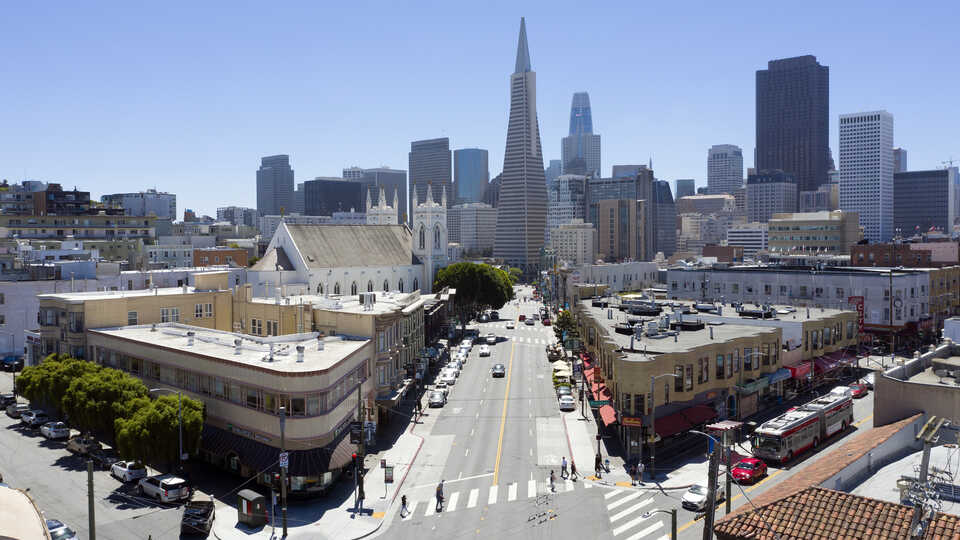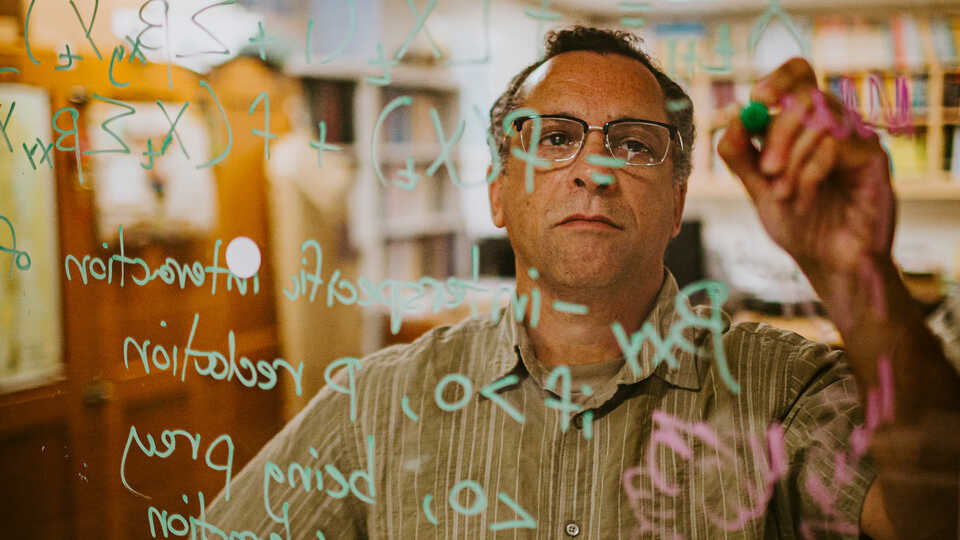Academy researchers develop economic-epidemiological model to help experts evaluate—and design—pandemic responses that maximize both health and economic outcomes
SAN FRANCISCO (March 9, 2023) — Researchers at the California Academy of Sciences, along with a collaborator at Denison University, have developed an innovative new model to assess how the California economy might have fared without economic closures to slow the spread of the coronavirus pandemic. Their initial findings—published today in Frontiers in Physics—reveal that under a “business-as-usual” approach wherein there were no business closures, California’s economy would have generally been better off than in reality. However, the economic impacts would still have been substantial and unevenly distributed, and there would have been a significant increase in deaths and hospitalizations from COVID-19 exacerbating current inequities.
“There is a common assumption that the economic emergency was caused solely by how we’ve reacted to the pandemic with varying business closures,” says senior author and the Academy’s Curator of Geology Peter Roopnarine, PhD. “So we asked, what if we had not shut down the economy? Ultimately, we found that the economic consequences, while lessened, would have still been severe and unevenly distributed throughout the state.”
The model allows for comparisons of pandemic impacts across regions and economic sectors within California, providing public health experts with location-specific socioeconomic data to develop more effective mitigation and vaccination strategies.
“When you have a pandemic, there will be unavoidable economic and social consequences,” says Roopnarine. “In order to create equitable policies and mitigation strategies that balance these consequences, we need tools that help us understand the varied impacts. This model is now one such tool.”
A California “business-as-usual” case study
Since the start of the pandemic, there had been much debate over how to quell the virus while sparing the economy. Citing record levels of unemployment in the United States, some argued that keeping the economy open—despite the risk of worse health outcomes—would have done less societal harm than the widespread business closures that were implemented. This study shows that may not be the case.
"Earlier, less robust modeling studies incorporated biases that prioritized the market over people's health,” Roopnarine says. “We show that is a simplistic and dangerous false dichotomy, and the economy would have been impacted even without closures because of dramatically increased mortality."
Indeed, without any mitigation measures, the researchers estimated that by March 2021, California’s unemployment rate would have reached 5.43% compared to 3.9% pre-pandemic. In reality, the employment numbers from March 2021 showed 8.4% unemployment. However, lower unemployment under that “business-as-usual” approach would have come at a steep price to public health. Without closing the economy, the model estimated nearly 170,000 deaths by March 2021 for just workers alone—more than three times the 52,000 actual cumulative COVID-19 deaths in California during that period.
Though the overall economy would have fared better, not every region would have been spared economic hardship under a “business-as-usual” approach. Of the ten regions studied, two (Fresno and Stockton-Lodi) would have experienced higher unemployment than in reality because they have smaller, less diverse economies, generally older workers, and relatively large agricultural sectors. These economies would have been impacted even more disproportionately by death and illness from COVID than they already have been, potentially leading to more severe cascading unemployment elsewhere.
“These findings imply that the initial mitigation responses, such as business closures, protected these more vulnerable economies from incurring larger job losses by preventing the spread of COVID-19,” Abarca says. “Our results also raise important questions about who benefits the most from our economy under normal circumstances, and how that economy can be improved to better serve those that have been hit hardest by this pandemic and future crises.”
A systems-level look reveals nuanced solutions
Though a paleontologist might seem an unusual candidate to lead a study on the economic effects of a pandemic, Roopnarine sees strong parallels between this work and his typical research analyzing how stressors like mass extinction events impacted prehistoric ecosystems.
“From galaxies to the cells in your body, complex systems have certain features in common,” Roopnarine says. One of these common features is being highly interconnected: what happens in one part of the system manifests in other parts. For a prehistoric environment, this might mean an asteroid decimates plant life resulting in the collapse of the reign of dinosaurs. For the economy, it could mean worker deaths from COVID in the agricultural sector lead to slowed food production and therefore negative impacts on the restaurant industry. It is these kinds of cascading effects on a system that the research team analyzed in this study.
By using data from the United States Bureau of Economic Analysis, the researchers determined the strength of connections between different economic sectors in various regions throughout California, allowing them to measure the susceptibility of each region to negative cascading effects such as those triggered by the pandemic. For public health experts and policymakers working to combat COVID-19 and future pandemics while minimizing economic impacts, this provides a foundation for building more robust mitigation and vaccination responses that target the most vulnerable regions.
“There are clear priorities for vaccination based on age and healthcare workers,” Roopnarine says. “But beyond that, our prioritization appeared to happen in a haphazard manner. Using our model, we can determine which workers are at greater risk of unemployment during a pandemic based on the sector they are in and which sectors are most important to prevent cascading economic damage. In other words, which industries should go back to work sooner to have the greatest health and economic outcomes.”
To ensure that decision-makers can utilize the model, study co-author Joseph Russack has designed an interactive data visualization tool that enables experts to explore the data used in the study, as well as simulate various economic scenarios based on the contagiousness, or R0, of novel COVID-19 variants.
"It’s important that we start applying complex system theory toward pandemic solutions,” says Academy Curatorial Assistant and study co-author Maricela Abarca. “The value of this model is that it shows government leaders that more nuanced approaches are available. We want to balance both the health of the economy and the health of the people participating in it so we can move away from an either/or narrative."
The California Academy of Sciences is a renowned scientific and educational institution with a mission to regenerate the natural world through science, learning, and collaboration. Based in San Francisco’s Golden Gate Park, it is home to a world-class aquarium, planetarium, and natural history museum, as well as innovative programs in scientific research and environmental education—all under one living roof. Museum hours are 9:30 am – 5:00 pm Monday – Saturday, and 11:00 am – 5:00 pm on Sunday. Admission includes all exhibits, programs, and shows. For daily ticket prices, please visit www.calacademy.org or call (415) 379-8000 for more information.
The Institute for Biodiversity Science and Sustainability at the California Academy of Sciences is at the forefront of efforts to regenerate the natural world through science, learning, and collaboration. Based in San Francisco, the Institute is home to more than 100 world-class scientists, state-of-the-art facilities, and nearly 46 million scientific specimens from around the world. The Institute also leverages the expertise and efforts of more than 100 international Associates and 450 distinguished Fellows. Through expeditions around the globe, investigations in the lab, and analysis of vast biological datasets, the Institute’s scientists work to understand the evolution and interconnectedness of organisms and ecosystems, the threats they face around the world, and the most effective strategies for ensuring they thrive into the future. Through deeply collaborative partnerships and innovative public engagement initiatives, they also guide critical conservation decisions worldwide, inspire and mentor the next generation of scientists, and foster responsible stewardship of our planet.
Press Contacts
If you are a journalist and would like to receive Academy press releases please contact press@calacademy.org.
Digital Assets
Hi-res and low-res image downloads are available for editorial use. Contact us at press@calacademy.org to request access.

